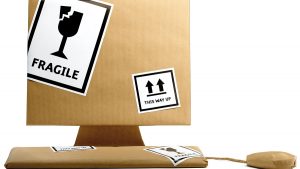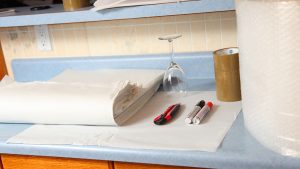Whilst the guides here will give you all the tips and advice for packing for a home move that could need, there is no substitute for experience.
Seriously consider if your time and effort would not be better spent on other tasks before deciding if you really want to pack your household things yourself.
Professional packing services offer a very cost-effective alternative to packing your own things and it is worth getting a quote to see if this service fits within your moving budget.
It is worth noting that many insurance companies will not insure any items during your home move that have not been packed by a professional packing company so check with your insurance company first.
You should also be aware that there are certain items that a removal company cannot move for health and safety reasons so before starting your packing be sure to know what is on their exclusion list.
Must know: Things That a Removal Company Cannot Move
If however you have the time and you decide to pack your items yourself there are steps that you can take that will help make the task easier.
How to Make Packing for a Home Move Easier
#1 Decide what you are going to pack
 Usually referred to as decluttering, this is the process whereby you decide on the items that you really want to take to your new home.
Usually referred to as decluttering, this is the process whereby you decide on the items that you really want to take to your new home.
This is your opportunity to get rid of all those odd mugs, glasses, and plates. The items stuck on shelves or at the back of cupboards just gathering dust.
The fewer items you need to pack the quicker the packing will be finished and the cheaper the cost of the packing materials will be.
You can easily donate the items you no longer need to family, and friends, on free ad websites, or donate to worthy causes. Irreparable items can be sent for recycling, and to raise some more money for your moving costs, you can sell items.
Also, consider how likely it is that particularly fragile items may get damaged in the home move. You may consider that it is not worth the cost and risk of transporting such things to your new home.
Essential reading: How to declutter for a home move
#2 Calculate how many packing boxes you need
Once you know what you intend to move you will need to work out how many boxes of each size you will need.
Running out of boxes halfway through packing will just add more time and inconvenience to the whole packing process.
Must read: How many boxes do I need to move home?
#3 Assemble your packing materials
The quality and type of packing materials you use will have a direct impact on the level of protection that they give the item you are moving.
Specific cardboard boxes should be used for specific items, the thickness and size of the box are crucial. No moving box should exceed 20kg for health and safety reasons. And remember that the bigger the box, the more awkward it is to move.
- Light things should be packed in large boxes that should be 1-2 ply thickness.
- Heavy items such as books should be packed in small boxes of at least 2 ply.
Good to know: How to choose the right boxes for your home move
Here is a list of the packing supplies for moving home that you will need:
- Cardboard boxes: A selection of various sized and strength cardboard boxes
- Plastic totes: Consider if using plastic tote boxes is a better option, they can work out cheaper and be more environmentally friendly. It can also be a significant saving on not using packing tape. You also won’t have to worry about what to do with the boxes after the move.
- Packing tape: Good quality packing tape is essential. There is little point in having good-quality boxes if the tape does not stick properly and the boxes come apart the moment you lift them.
- Bubble wrap. Bubble wrap is the home movers’ best friend but you can also use old clothing, blankets, and soft materials as space fillers to save some money. Bubble wrap, however, will offer your fragile items the highest level of protection.
- Packing paper. Using old newspapers and magazines instead of proper packing paper opens you to the risk of transferring the print ink to the items you are trying to protect. Packing paper will not create such a problem.
- Marker pens. An invaluable piece of your packing kit. It is essential to know what is in each box and in which room the box is to be placed in your new home. Use a black marker for writing the contents, a red marker for clearly marking any boxes that are ‘Fragile’ ‘This Way Up’ etc and you can even use a different coloured marker for each room of the home so that they are easily identifiable.
Learn more: Packing materials for Moving Home: All you need to know
#4 Create a Packing Station
 It will make packing so much easier if you can use a table or have free space available to pack your household goods.
It will make packing so much easier if you can use a table or have free space available to pack your household goods.
- Create a space where you have your packing materials arranged so that they are easily to hand.
- Lay out the boxes so that similar-sized cartons are in separate piles. They will be easier to identify and it will be obvious when you are running low of a particular size.
- Clear an area where you can pack and an area where you can stack the boxes that you have filled.
- Stack the heaviest cartons first working up to the lightest items in like-for-like-sized boxes.
- Avoid stacking boxes too high as the bottom boxes will collapse.
- A packing room will allow you to shut the door to keep pets and children out of harm’s way.
#5 Pack your things
Different items will require different methods and packing materials to prevent any damage to them in the course of your home move.
There are extensive guides on how to pack every item in your home on this page. It is worth taking the time to read these as packing mistakes can be costly.
You may like: 40 Easy and Efficient Packing Tips for Moving Home
#6 How to tape a box securely
Having gone to the trouble of selecting the correct type of box for each particular item you are packing, it makes sense to know the correct way to secure a removal box.
- Cardboard boxes should be sealed along the edges of each flap that meet at the centre of the box.
- A double strip of tape across the width of the box, well-spaced to support each end of the box, will secure the flaps further.
- You may also consider that the edges of the carton require additional support.
#7 How to label a home moving box
Labeling your moving boxes will make the unloading and unpacking so much easier. It will also be a real help to you if you need to locate an item before all the boxes are unpacked.
In the unlikely event that a box goes missing during the journey from the old to the new home, you can easily identify which box is missing.
- In black marker write the contents of the box on the outside of the carton.
- In the red marker write warnings to the people moving the item, such as ‘Fragile’, ‘ This way up’, and ‘Glass-Handle with care’ for example.
- You can use different coloured markers to identify which box the room is to be placed in in the new home. Green for kitchen, blue for bathroom for example.
- Number each box. 1-10 for the bedroom, and 1-15 for the kitchen so that you can easily account for every box for that particular room.
Read more: How to Label Moving Boxes the Write Way

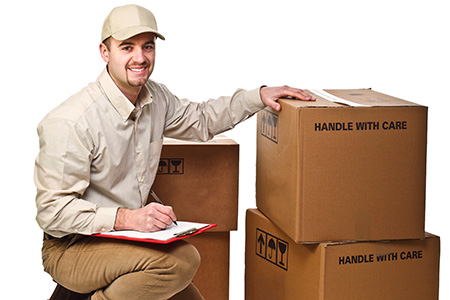 Specific items should be packed in specific ways to prevent damage when they are being moved.
Specific items should be packed in specific ways to prevent damage when they are being moved.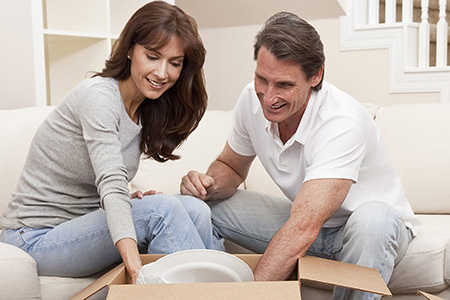 If your budget runs to it purchase plate-specific packing boxes. These are thick-walled boxes that have partitions inside that allow each plate to be placed on its edge and so will be protected from banging against the plate next to it.
If your budget runs to it purchase plate-specific packing boxes. These are thick-walled boxes that have partitions inside that allow each plate to be placed on its edge and so will be protected from banging against the plate next to it.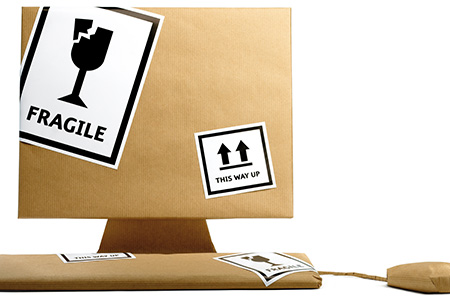 Can you imagine being without your laptop, computer, or TV because it got damaged during your home move?
Can you imagine being without your laptop, computer, or TV because it got damaged during your home move?









